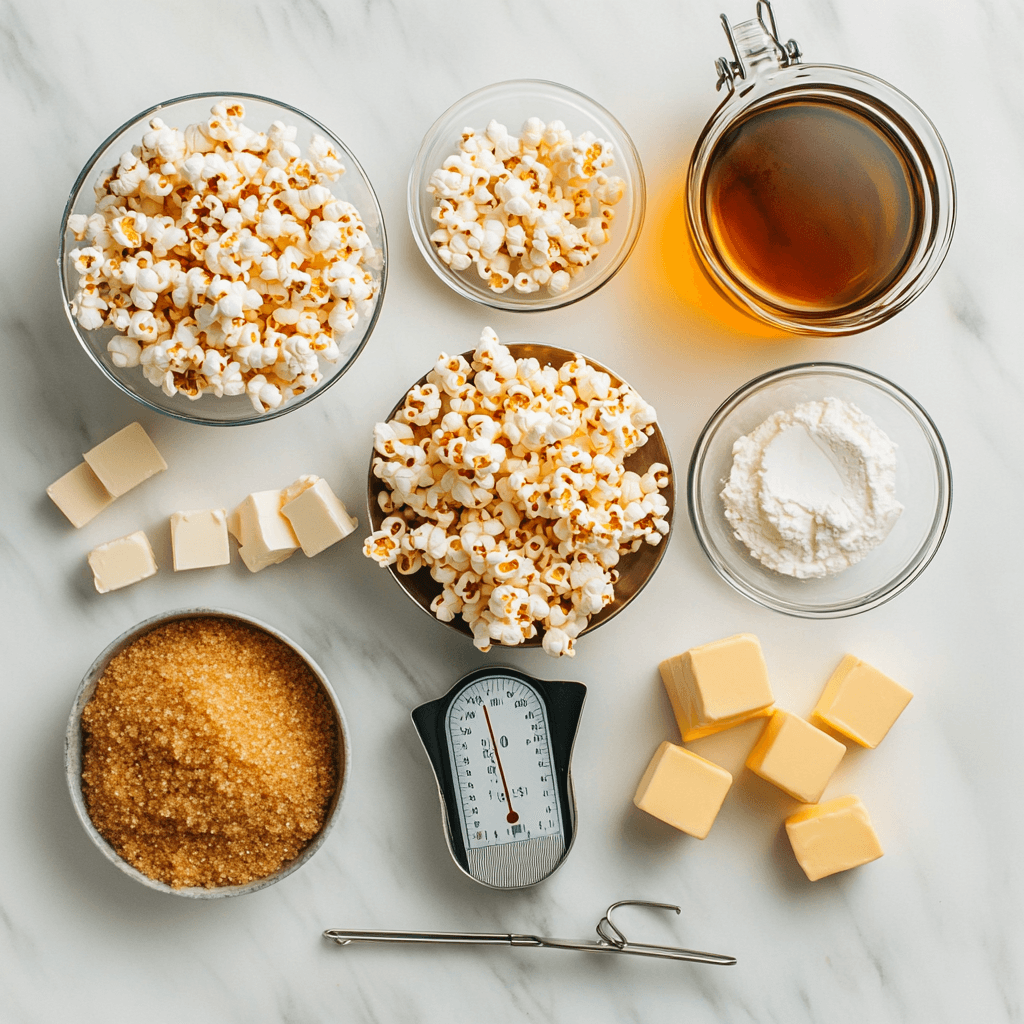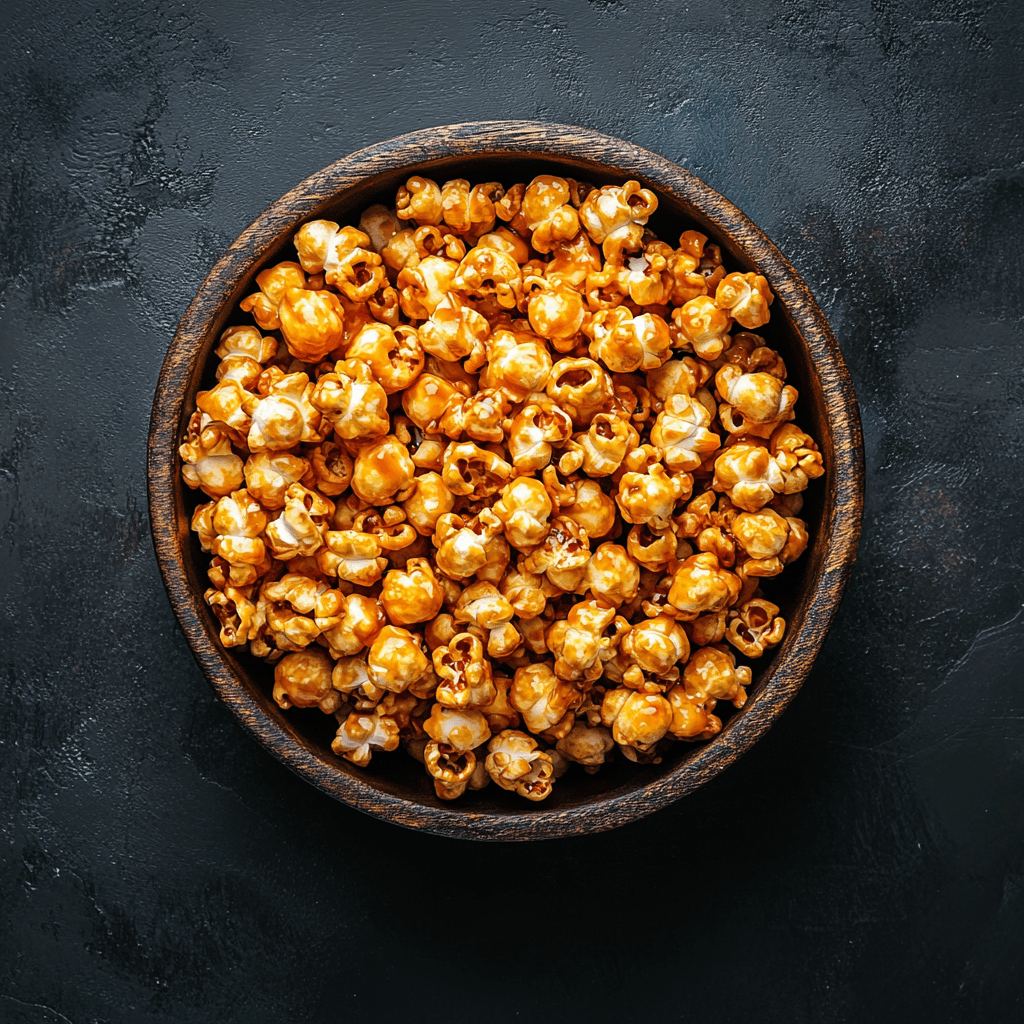Three years ago, I thought I’d surprise my kids with homemade Gordon Ramsay caramel popcorn for movie night. What I got instead was a bowl of disappointment that could have doubled as dental work. The caramel was chewy, half the kernels were bare, and my confidence was shot. That disaster taught me everything about what NOT to do when making caramel popcorn, and today I’m sharing the bulletproof method that transformed my kitchen failures into crispy perfection.
Why This Recipe Works (And Where Most Go Wrong)
The magic of Gordon Ramsay caramel popcorn lies in precision temperature control and understanding the science behind caramel. Most home cooks fail because they either undercook the caramel (resulting in chewy coating) or overcook it (creating bitter, hard shells). According to food science research, caramelization occurs optimally between 248°F and 252°F, creating the perfect balance of crispy texture and rich flavor.
The second critical mistake is skipping the oven step. While you might think coating popcorn with hot caramel is enough, the oven time at low temperature actually dehydrates the coating, transforming it from sticky to crispy. This technique, inspired by Gordon Ramsay’s attention to texture details, ensures every kernel has that satisfying crunch.
Ingredients That Actually Matter
Your Gordon Ramsay caramel popcorn success depends heavily on ingredient quality and ratios. Use heavy cream instead of milk – the higher fat content creates a richer caramel that coats better and crisps up beautifully. Brown sugar adds molasses notes that white sugar can’t match, giving you that complex caramel flavor that elevates this from basic to restaurant-quality.
The corn syrup isn’t optional – it prevents crystallization and keeps your caramel smooth during the critical coating phase. Without it, you’ll get grainy, seized caramel that won’t distribute evenly. If you’re looking for similar precision in other recipes, check out our Gordon Ramsay garlic bread guide for more temperature-critical cooking techniques.

Step-by-Step Instructions
Critical Warning: Never leave your caramel unattended once it hits 240°F. The temperature can spike rapidly, and burned caramel is irreversible.
Start by preheating your oven to 250°F and preparing your workspace. Line a large baking sheet with parchment paper and have your popcorn ready in a large mixing bowl. Remove any unpopped kernels – they’ll break teeth and absorb caramel without contributing to the final texture.
In your heavy-bottomed saucepan, combine brown sugar, butter, corn syrup, and heavy cream. Attach your candy thermometer to the side, ensuring the bulb doesn’t touch the bottom of the pan. Cook over medium heat, stirring constantly with a wooden spoon.
Critical Warning: Don’t increase the heat to speed up the process. High heat will burn the bottom of your caramel before the center reaches proper temperature.
Watch your thermometer carefully as the mixture bubbles and transforms. At around 240°F, the caramel will start taking on that deep amber color. Once it hits exactly 248°F, remove it from heat immediately. Working quickly, stir in vanilla extract, baking soda, and salt. The mixture will foam up dramatically – this is normal and necessary.
Pour the hot caramel over your popcorn and mix thoroughly with a wooden spoon until every kernel is coated. Don’t worry if it seems like too much caramel – the oven step will fix this. Spread the coated popcorn on your prepared baking sheet in a single layer and bake for 15 minutes, stirring every 5 minutes to ensure even crisping.
Pro-Tips That Change the Game
- Temperature is everything: Invest in a quality candy thermometer. The difference between 245°F and 250°F is the difference between chewy failure and crispy success.
- Timing matters: Have everything ready before you start cooking. Once caramel hits temperature, you have maybe 60 seconds to get it mixed and spread before it hardens.
- Baking soda science: This creates tiny air bubbles that make caramel easier to bite through. Don’t skip it, even if your caramel looks perfect without it.
- Fresh popcorn only: Day-old popcorn has lost moisture and won’t hold caramel properly. Pop it fresh or your coating will slide right off.
- Double-batch wisdom: This recipe scales perfectly. Make extra because Gordon Ramsay caramel popcorn disappears faster than you’d expect.
For more advanced cooking techniques that require similar precision, explore our comprehensive venison wellington guide which uses comparable temperature control methods.
Storage & Leftovers Guidance
Store your Gordon Ramsay caramel popcorn in an airtight container at room temperature for up to one week. The key is ensuring it’s completely cool before storing – any residual heat will create condensation and make your crispy coating soggy.
For longer storage, freeze portions in freezer bags for up to three months. Thaw at room temperature for 30 minutes before serving. Never refrigerate caramel popcorn – the moisture will destroy the texture you worked so hard to achieve.
If your caramel popcorn loses its crispiness, spread it on a baking sheet and warm in a 200°F oven for 5-10 minutes. This technique also works well with other confections, similar to how we refresh textures in our garlic bread doctoring methods.

Gordon Ramsay Caramel Popcorn
Ingredients
Equipment
Method
- Preheat oven to 250°F (120°C) and line a large baking sheet with parchment paper.
- Place popped popcorn in a large mixing bowl, removing any unpopped kernels.
- In a heavy-bottomed saucepan, combine brown sugar, butter, corn syrup, and heavy cream.
- Attach candy thermometer to side of pan and cook over medium heat, stirring constantly.
- Continue cooking until mixture reaches 248°F (120°C) on candy thermometer, about 8-10 minutes.
- Remove from heat immediately and quickly stir in vanilla extract, baking soda, and salt.
- Pour hot caramel over popcorn and mix thoroughly with wooden spoon until evenly coated.
- Spread coated popcorn on prepared baking sheet in single layer.
- Bake for 15 minutes, stirring every 5 minutes.
- Remove from oven and spread on parchment paper to cool completely before storing.
Nutrition
Notes
Don’t skip the baking soda – it creates the perfect texture
Store in airtight container for up to 1 week
Can be frozen for up to 3 months
Work quickly when coating popcorn as caramel hardens fast
Tried this recipe?
Let us know how it was!Comprehensive FAQ Section
What is caramelized popcorn called?
Caramelized popcorn is commonly called caramel corn, caramel popcorn, or sometimes kettle corn (though true kettle corn uses oil and sugar during popping). Gordon Ramsay caramel popcorn specifically refers to this restaurant-quality preparation method that ensures consistent crispy coating.
Why do you add baking soda to caramel popcorn?
Baking soda creates a chemical reaction that produces carbon dioxide bubbles in the hot caramel. These tiny air pockets make the hardened caramel easier to bite through and create a lighter, more pleasant texture. Without baking soda, your caramel coating would be rock-hard and difficult to chew.
Why did my caramel popcorn turn out chewy?
Chewy caramel popcorn results from undercooking the caramel mixture. If your caramel didn’t reach 248°F, it retains too much moisture and never fully hardens. Temperature control is critical in caramel-making, and even 5 degrees can mean the difference between perfect and disappointing results.
Why is my homemade caramel popcorn soggy?
Soggy Gordon Ramsay caramel popcorn usually indicates moisture problems. Either your popcorn wasn’t completely dry before coating, you stored it before it fully cooled, or humidity got into your storage container. Always ensure popcorn is fresh and completely dry, and cool the finished product completely before storing in airtight containers.
Can kids eat caramel popcorn?
Kids over 4 years old can generally eat caramel popcorn safely, but supervision is important. The hard caramel coating can be a choking hazard for younger children. Always ensure kids are sitting down while eating and have water available. For safer alternatives, check our guide on what to serve with garlic bread for kid-friendly options.
Why does my caramel popcorn taste bitter?
Bitter caramel popcorn indicates overcooking. When caramel exceeds 260°F, the sugars begin to burn rather than caramelize, creating bitter compounds. Always use a candy thermometer and remove from heat at exactly 248°F to avoid this problem.
Making perfect Gordon Ramsay caramel popcorn isn’t about luck – it’s about understanding the science and respecting the process. Temperature control, timing, and technique will transform your kitchen disasters into crispy perfection that rivals any gourmet shop. Take your time, trust your thermometer, and remember that every professional chef has burned their share of caramel on the way to mastery.
Stay safe, Jack Sullivan


